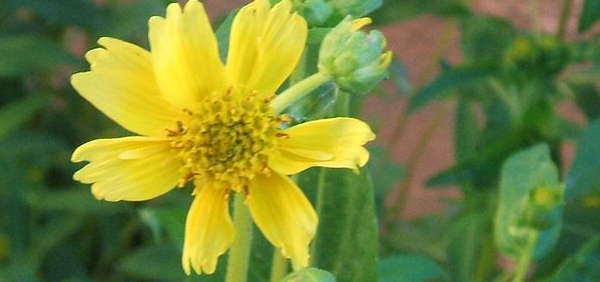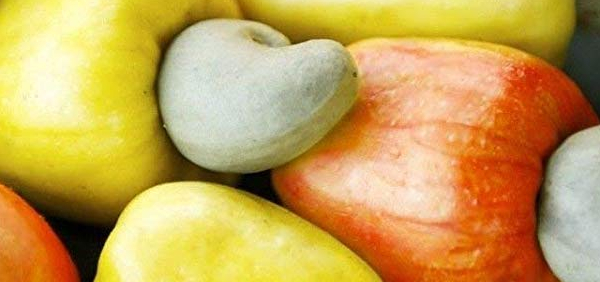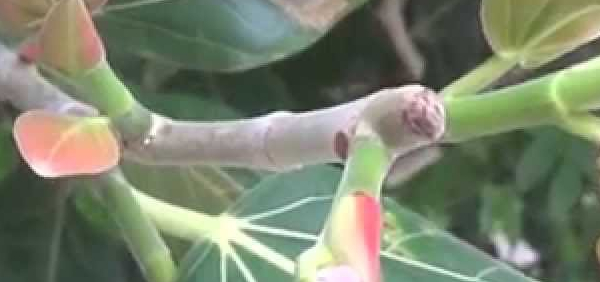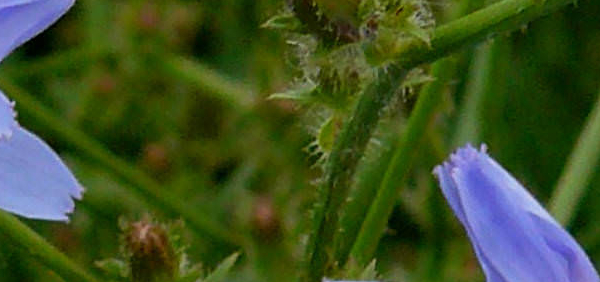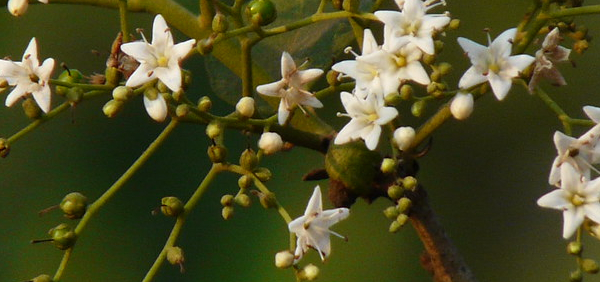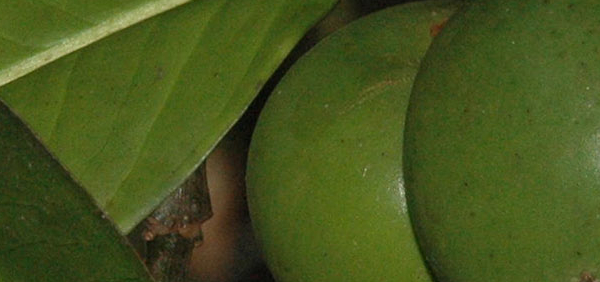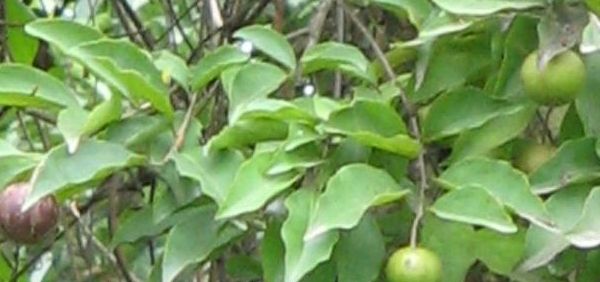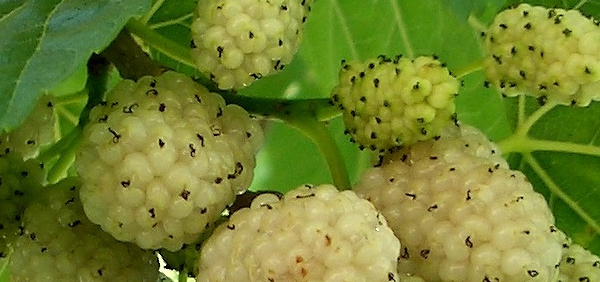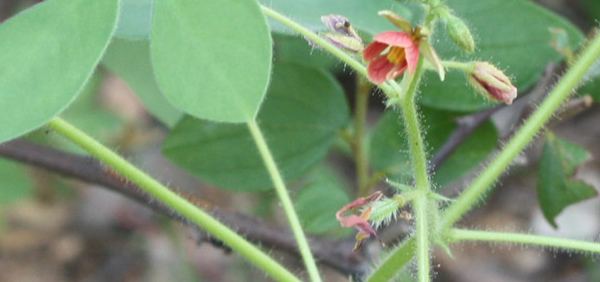avartaki :
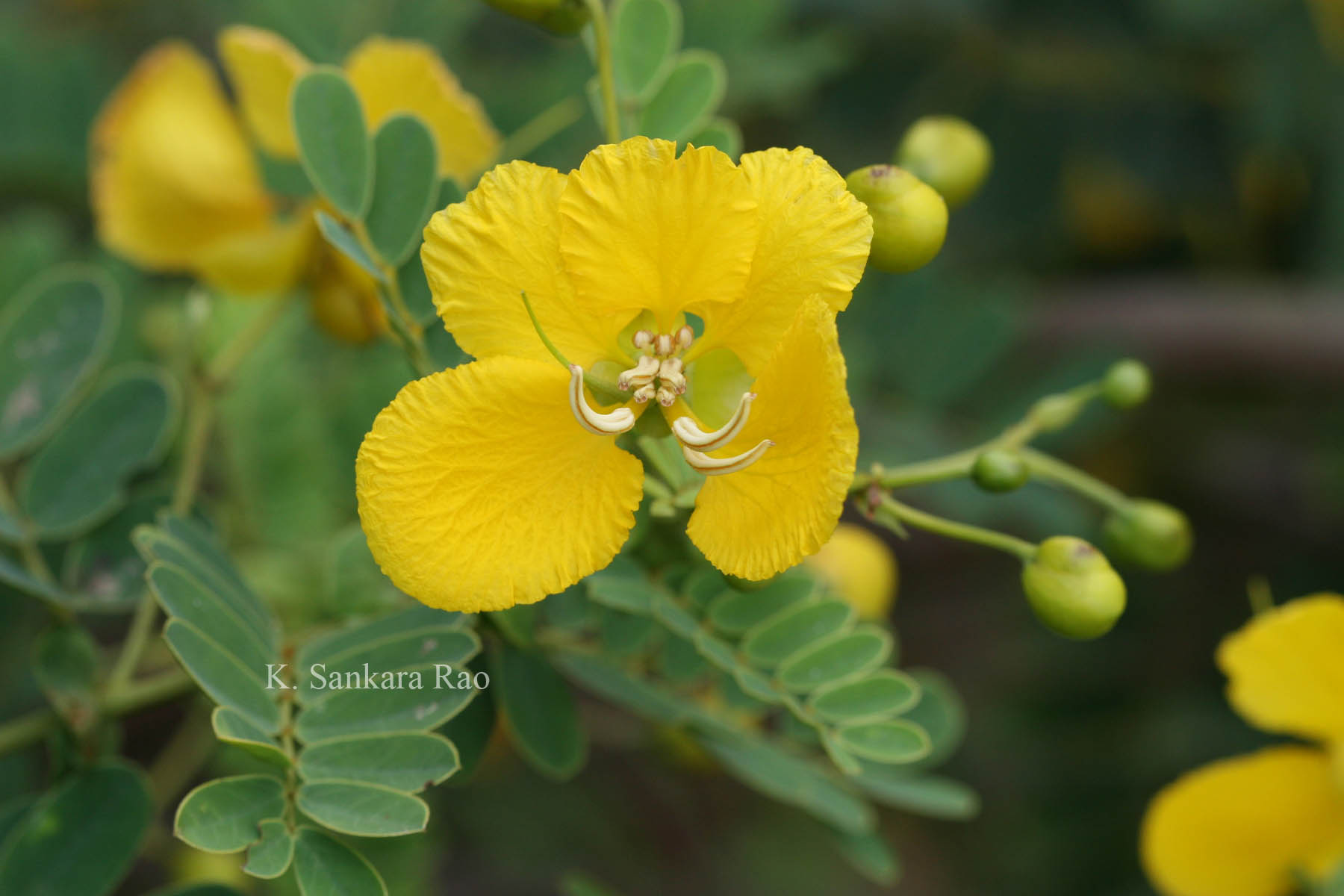
Cassia auriculata (CA) Linn, family Caesalpiniaceae, also known as Tanner’s Cassia or Tanners Senna or as Avaram tree or Avartaki in vernacular, which is used in Ayurveda in the treatment of diabetes. Cassia auriculata is also used for long period in various chronic diseases therapeutically.
HISTORICAL AND MYTHOLOGICAL REVIEW:
The medicinal plants are used traditionally to prevent or cure disease. The medicinal values of the plants are due to presence of phytochemical constituents, which produce definite physiological action on the human body. The history of health care in India goes back to 5000 B.C., when health care needs and diseases were noted in ancient literature like “Rig Veda” and “Atharva Veda”. In 1000 B.C., the texts like “Charak Samhita” and “Sushruta Samhita” were documented, in which use of plants and polyherbal formulations was highlighted for health care. Cassia species are rich sources of polyphenols, anthraquinone derivatives, flavanoids, polysaccharides, saponins, tannin and steroids. Some Cassia species are rich in Glycerides with linoleic, oleic, stearic and palmitic acids. Generally Cassia species are well known for their laxative and purgative constituents, and are also used for the cure of skin diseases.
Taxonomical Classification
Kingdom: Plantae - Plants
Subkingdom: Streptophyta
Superdivision: Spermatophyta - Seed plants
Division: Magnoliophyta - Flowering plants
Class: Magnoliopsida - Dicotyledons
Order: Fabales
Family: Caesalpiniaceae
Genus: Senna
Species: S. auriculata
VERNACULAR NAMES
English: Tanner’s Cassia, Tanner’s Senna, Mature Tea Tree
Hindi: Tarwar, Awal, Tarval
Telugu: Tangedu, Merakatangeedu
Marathi: Arsual, Taravada, Tarwad
Synonyms
Synonyms in Ayurveda: Avartaki, Pitapuspa, Pitkalika, Manojyna, Pitkala, Charmaranga, bhavya
Rasa:
Kashaya Tikta
Guna:
Laghu Ruksha
Veerya:
Sheetha
Vipaka:
Katu
Karma:
Atisar Kapha-pittaghna Krimighna Kushtagna-
useful in skin diseases,
Mutrasangrahaniy Pramehaghna Shukrastambhan Stambhan
Phytochemistry:
The flower and leaf extract of CA is shown as antihyperglycemic in streptozotocin-induced experimental diabetes. Methanolic extracts of CA flowers have been demonstrated to inhibit α-glucosidase in vivo as well as in vitro. Its aqueous extract is reported to prevent the lipid peroxidation in brain of diabetic rats. Hyponidd, a formulation containing CA has been shown as antihyperglycemic and antioxidant. Polyphenols are considered to be the active ingredients of CA. Generally, hydro-alcoholic solvent is used to extract polyphenols from the crude herbal material. Traditional medicine practice also generally advocates use of hydro-alcoholic (HA) extracts of herbal materials. Yet, there is a growing practice to adopt technology-based supercritical fluid extracts (SFE) for higher yields of polyphenol and are now widely used by the industry. However, technology-based extracts such as SFE has no prior evidence of traditional use and hence we attempted a safety pharmacology study.
Adultrants:
Adulterants resemble the original crude drug, morphologically, chemically, therapeutically but are sub standard in nature and cheaper in cost, Pieces of Strychnous nux- blanda / nux- potatorum – S. nux-vomica, Avartaki leaves added to Indian senna leaves.
Avartaki Patra is used as an adultrant for Markandika.
Morphology:
Avaram senna is a much branched shrub with smooth cinnamon brown bark and closely pubescent brachlets.
The leaves: Alternate, stipulate, paripinnate compound, very numerous, closely placed, rachis 8.8-12.5 cm long, narrowly furrowed, slender, pubescent, with an erect linear gland between the leaflets of each pair, leaflets 16-24, very shortly stalked 2-2.5 cm long 1-1.3 cm broad, slightly overlapping, oval oblong, obtuse, at both ends, mucronate, glabrous or minutely downy, dull green, paler beneath, stipules very large, reniform-rotund, produced at base on side of next petiole into a filliform point and persistent.
Flowers: Irregular, bisexual, bright yellow and large (nearly 5 cm across), the pedicels glabrous and 2.5 cm long. The racemes are few-flowered, short, erect, and crowded in axils of upper leaves so as to form a large terminal inflorescence (leaves except stipules are suppressed at the upper nodes). The 5 sepals are distinct, imbricate, glabrous, concave, membranous and unequal, with the two outer ones much larger than the inner ones. The petals also number 5, are free, imbricate and crisped along the margin, bright yellow veined with orange. The anthers number 10 and are separate, with the three upper stamens barren; the ovary is superior, unilocular, with marginal ovules.
The fruit: A short legume, 7.5–11 cm long, 1.5 cm broad, oblong, obtuse, tipped with long style base, flat, thin, papery, undulately crimpled, pilose, pale brown. 12-20 seeds per fruit are carried each in its separate cavity [8]. Chemical constituents: Pod husk contains nonacosane and nonacosan-6-one, chrysophanol, emodin and rubiadin [8], β-sitosterol, polysaccharides, flavonoids, anthracene derivatives and some dimeric procyanidins [12], Saponins and tannins. Yesu Raj et al. (2011) found fatty acid esters, fatty acid amide, terpenoids, diterpene alcohols, phytols as major compound groups in the methanol fractions from the seed extract of Cassia auriculata by GC- MS analysis. The chemical composition of the leaves of Cassia auriculata was investigated by Anandan et al. (2011) and revealed the presence of 3-O-Methyl-d-glucose (48.50%), α-Tocopherol-β-D mannoside (14.22%), Resorcinol (11.80%), n- Hexadecanoic acid (3.21%), 13-Octadecenal, (Z)- (2.18%) and 1,2,3,4-Tetrahydroisoquinolin-6-ol-1-carboxylic acid (1.98%) which were identified by GC – MS analysis. Senthilkumar and Reetha (2011) isolated an antibacterial compound - Oleanolic acid from the leaves of Cassia auriculata and identified by IR spectrum, HNMR, CNMR and Mass spectrum studies. Juvekar and Halade (2006) investigated the flowers of Cassia auriculata which revealed the presence of anthroquinones, aloe emodin and sitosterols.
Uses
Gardens
Senna auriculata is suitable for landscaping roadways and home gardens. It tolerates drought and dry conditions, but not much cold. The flowers in racemes are also attractive.
Geographical distribution:
India and Sri Lanka are said to be its origin place. Cassia auriculata is extensively cultivated in area which is dry and warm ( Punjab, Haryana, Utter Pradesh, West Bengal). Ecologically it tolerates a wide range of climate and temperature, yet it prefers to grow and flourish well in warmth. It can thrive on dry stony hills, on black soils, along road side, in degraded forest, waste land, railway embankments, etc. Martin ( 1983 ) suggested C. auriculata for the development of landscape. It is found in wild state in Rajasthan, Maharashtra, Madya Pradesh, Gujarat, Tamilnadu and Andhra Pradesh.
Therapeutic Uses:
Flower: Pramehashamana
Tender Fruits: Vamihara, Krimihara, Sarvapramehahara, Trishnaghna, Akshihita, Ruchya.
Seeds: Madhumehaghna, Vishahara, Raktaatisaraghna
Root: Trishnahara, Pramehaghna, Shwasaghna, Raktapittashaman, Shukrakshayahara.
This plant is said to contain a cardiac glucoside (sennapicrin) and sap, leaves and bark yield anthraquinones, while the latter contains tannins.
The root is used in decoctions against fevers, diabetes, diseases of urinary system and constipation. The leaves have laxative properties. The dried flowers and flower buds are used as a substitute for tea in case of diabetes patients. It is also believed to improve the complexion in women. The powdered seed is also applied to the eye, in case of chronic purulent conjunctivitis. In Africa the bark and seeds are said to give relief in rheumatism, eye diseases, gonorrhea, diabetes and gout.
The plant has been shown to have antibacterial activity in the laboratory.
The plant has been reported to possess antipyretic, hepatoprotective, antidiabetic, antiperoxidative and antihyperglyceamic and microbicidal activity. C.auriculata has been shown to antiviral activity and anti spasmodic activity. The plant is used in the traditional system of medicine for female antifertility, leprosy, worm infestation, diarrhoea, disease of pittam. The plant has been widely used as a cure for rheumatism (Kirtikar and Basu, 2006) and conjunctivitis (Pari and Lata, 2002). The various parts of the plant were reported to exert a beneficial effect to alleviate the symptoms of diabetes (Surana et al., 2008). The flowers are used to treat urinary discharges, nocturnal emissions, diabetes and throat irritation.
The Bark is used in skin conditions; bark as astringent; useful in checking secretion or haemorrhage. They also restore the disordered processes of nutrition. The Leaf extract has a protective action against alcohol induced oxidative stress to the cells as evidenced by the lowered tissue lipid peroxidation and elevated levels of the enzymatic and non-enzymatic antioxidants and experimentally induced alcohol related liver damage.
The leaf extracts also shows emollient effect. The seeds of tanner’s cassia find their application in purulent opthalmia i.e., inflammation of the eye or conjunctiva. They should be finely powdered and blown into the affected eyes. Seeds are astringent, sour, cooling, constipating, depurative, aphrodisiac, anthelmintic, stomachic, alexeteric, useful in diabetes, chyluria, ophthalmic, dysentery, diarrhoea, swellings, abdominal disorders, leprosy, skin diseases, worm infestations, chronic purulent conjunctivitis.
The Roots are used in skin diseases and asthma. The roots are astringent, cooling, alterative, and depurative and alexeteric, and are useful in skin diseases, leprosy, tumors, asthma and urethroroea.
Leaves, Flowers and Fruits as antihelmintic; its leaves and petals are both mildly astringent in taste. It also checks the flow of extra amount of urine and helps in absorption of required amount of fluids in the kidneys and intestines
Systemic Use:
For diabetes:
(i) Grind the dried bark, flowers, leaves and fruits in equal quantities. Boil this mixture with two glasses of water till the water is reduced to half glass. Take one tablespoon daily. It decreases the blood sugar level.
(ii) Take some drinking water in an earthen pot and soak flowers of this plant. Drink frequently this water. It gives relief from diabetes.
For Acid reflux:
C. auriculata has properties to fight against acid formation in the body. Take the bark, flower, leaves and fruits of C. auriculata in eual proportion and grind them to powder. Take 1/2 tablespoon of this mixture thrice a day with lukewarm water for one month regularly.
For fatigue:
Take all parts of Cassia in equal proportion and grind them into powder. Taking 1/2 tablespoon thrice a day with hot water for 40 days is beneficial for fatigue.
For High blood pressure:
Take half cup soaked black gram and a sliced fig, pour in two glasses of water in the earthen pot at night. Next morning boil them till the water is reduced to half. Strain and then add 1/2 tablespoon powder of Cassia seeds. Drinking it for 40 days regularly is beneficial.
For Constipation:
Take some curry leaves and leaves of Cassia and make a paste. Add one tablespoon honey and take immediately after a meal. It gives relief in constipation.
For Conjuctivitis:
The powdered seeds are applied to the eye for chronic purulent conjunctivitis.
For Skin Diseases:
Take fresh flowers and soak in drinking water for few hours. Drinking frequently this water improve complexion in women.
Precaution
Avoid using Cassia as herbal medicine during pregnancy, breast feeding and at least 2 weeks before a planned surgery.
Pharmacological:
The anti-inflammatory activity:
The anti-inflammatory activity of various extracts of leaves was carried out using carrageenan induced rat paw edema. Carrageenan induced inflammation represents a classical model of edema formation and hyperalgesia, which has been extensively used for evaluation of anti-edemal effect of drugs. The sub-planter administration of carrageenan in rat is responsible for the typical biphasic edema in which the first phase observed around 0-2 hours is attributed to the release of histamine and serotonin. The second phase of swelling which last for 2-6 hours is due to release of prostaglandin- like substances. Methanolic extract of C. auriculata leaves showed potent anti-inflammatory activity compared to aqueous, hydroalcoholic and ethyl acetate extracts. As the anti-inflammatory effect was more significant during later phase of inflammation, it can be concluded that there might be inhibition of inflammatory mediators such as prostaglandins, leukotrienes, polymorphonuclear cells or bradykinins. In accordance with previous studies steroids, flavonoids, alkaloids, terpenoids and tannins have been shown to possess of anti-inflammatory activity. Thus the anti-inflammatory effect of methanolic extract may be due to presence of of active constituents like alkaloids, flavonoids, tannins and steroids. However, chemical constituents and mechanism responsible for the pharmacological activities remain to be investigated. The anti-inflammatory activity of C. auriculata seems to be related to its histamine, kinin and prostaglandin inhibitory activity.
Antimutagenic activity: Effective cancer chemotherapy as well as immunosuppressive therapy with Cyclophoshamide (CP) is severely limited due to its unwanted toxicity. The cytotoxic effect of CP is attributed to the inhibition of cell division by damaging the DNA of proliferating cancerous cells. However, at the same time it also damages the DNA of the healthy tissues with high cellular turnover such as the bone marrow, gastro-intestinal tract and germ cells. Therefore, although CP activated metabolites have been shown to be beneficial for treating cancer, the side effects of these metabolites causes great concern. CP generates active metabolites, 4-hydroxycyclophosphamide, phosphoramide mustard and acrolein. Among these metabolites acrolein is highly toxic in nature and generates oxidative stress and damage DNA by inducing single strand breaks. Preliminary phytochemical studies indicates that C. auriculata extract contains carbohydrates, glycosides, alkaloids, tannins, phenolic and flavonoidal compounds. Flavonoids are a group of polyphenolic compounds, which exhibits biological effects. The presence of high phenolic and flavonoid content has contributed directly to the antioxidant activity by neutralising the free radicals. Flavonoid rich extract of C. auriculata pre-treatment attenuates the CP induced genotoxicity in the bone marrow. The ethyl acetate extract of C. auriculata Linn possess significant anti-mutagenic potential against CP induced chromosomal aberration. The chemoprotective potential of C. auriculata could be due to its antioxidant property. Thus, C. auriculata has the potential as an adjuvant to Cyclophoshamide for preventing the adverse effects associated with these drugs.
Antimicrobial activity: The methanol extract of C. auriculata leaves exhibit strong antimicrobial activity against all the tested organisms. B. cereus (18 mm), S. aureus (14 mm), E. coli (16 mm), K. pneumoniae (14 mm), P. aeruginosa (10 mm) and P. mirabilis (16 mm). The chloroform extract showed good activity against B. cereus (20 mm), S. aureus (12 mm), E. coli (14 mm), K. pneumoniae (14 mm) and P. mirabilis (12 mm). The aqueous extracts showed moderate activity against B. cereus (12 mm), S. aureus (10 mm) and P. mirabilis (8 mm). The Gram‑positive bacteria are strongly inhibited by all the extracts of C. auriculata (L) than the Gram‑negative bacteria and it shows minimum activity against P. aeruginosa. The plant extracts showed the presence of carbohydrate, protein, alkaloids flavonoids, saponin and tannin in methanol and chloroform; carbohydrate, protein, alkaloids, saponin and tannin in aqueous; rest of steroids in chloroform. The antimicrobial activity may be due to the presence of phytochemical constituents like flavonoids and phenolic compounds present in the plant as secondary metabolites.
Antioxidant activity: Cassia auriculata showed antioxidant activity using improved assay based on the decolorization of the radical monocation of 2,2-azinobis–(3-ethylbenzothiazoline-6-sulfonic acid) (ABTS) and 1,1-diphenyl-2-picrylhydrazyl (DPPH) radical scavenging method. Sodium nitroprusside serves as a chief source of free radicals. Scavengers of nitric oxide compete with oxygen leading to reduced formation of Nitric Oxide (NO). The absorbance of the chromophore formed during diazotization of the nitrite with sulphanilamide and subsequent coupling with napthylethylene diamine is used as the marker for NO scavenging activity. The chromophore formation was not complete in the presence of MECA (methanolic extract of Cassia auriculata), which scavenges the NO thus formed from the sodium nitroprusside and hence the absorbance decreases as the concentration of the MECA extract increases in a dose dependent manner. Lipid peroxidation has been implicated in the pathogenesis of various diseases including arthritis. It is well established that bioenzymes are very much susceptible to LPO, which is considered to be the starting point of many toxic as well as degenerative processes. The MECA extract exhibited protection against lipid peroxidation induced by FeSO4. Initiation of lipid peroxidation by ferrous sulphate takes place through Ferryl perferryl complex. The MECA inhibited the FeSO4 induced lipid peroxidation in a dose dependent manner. The inhibition could be caused by the inhibition of formation of Ferryl perferryl complex. The presence of flavonoids in Cassia auriculata flowers may be responsible for antioxidant activities. The DPPH system is a stable radical generating procedure. It is well known that the DPPH has ability to capture free radicals is due to the delocalization of the unpaired electron all over the molecule. DPPH is a potent scavenger for many other radicals due to the easiness in following the procedure – violet color of DPPH faints into the yellow color of its reduced congener ( DPPH-H), with a high shift in the visible spectra (from 520 nm to 330nm). Cassia auriculata is widely used in number of pharmacological actions with high content of flavanoids and bioflavonoid seems to have a high potential for antioxidant activity. Inhibition of lipid peroxides can be explained as one of the important biochemical paradigm in understanding of the mechanism(s) of the action of MECA flowers.
Antipyretic Activity of Cassia auriculata: L.Pari and M.Latha et al (2002) presented antipyretic properties of serial extract of leaves of Cassia auriculata, and presented that most of the extract caused a significant inhibition of Oral administration of 0.45 g/kg body weight of the aqueous extract of the flower for one day it showed good results for antipyretic activity. Vedavathy and Rao has also done the similar work in the year of 1991. It showed a good resolution for the antipyretic activity.
Anthelmintic Activity: (Satish B. Kosalge, Ravindra A. Fursule et al 2009)., The aqueous extract of Cassia auriculata leaves, were investigated for the anthelmintic potential against earthworms (Eicinia faeteda), tapeworms(Raillietina spiralis) and roundworms(Ascardia galli). Various concentrations (10-50 mg/ml) of plant extract were tested in the bioassay and different parameters such as determination of time of paralysis and time of death of the worms were recorded. All the extracts exhibited significant anthelmintic activity at highest concentration of 50mg/ml. Piperazine citrate (10 mg/ml) was used as reference standard and distilled water as control.
Hepatoprotective activity: Jeeva Jothi Dhanasekaran; Mathangi Ganapathy et al (2011) worked on Cassia auriculata Linn leaf and flowers extract on alcohol induced liver injury in albino rats and presented data of excellent hepatoprotective effects.
Antidiabetic activity: In experimental diabetes, enzymes of glucose and fatty acid metabolism are markedly altered. Persistent hyperglycemia is a major contributor to such metabolic alterations, which lead to the pathogenesis of diabetic complications. The study was designed by L Pari, M Latha in 2002, to study the effect of Cassia auriculata flower extract on hepatic glycolytic and gluconeogenic enzymes and STZ-diabetic rats were given the plant’s extract per os for 30 days. In conclusion, the observations showed that the aqueous extract possessed an antihyperglycemic effect and suggested that enhanced gluconeogenesis during diabetes is shifted towards normal and that the extract enhanced the utilization of glucose through increased glycolysis. The effect of the extract was more prominent than that of glibenclamide.
PTP 1B inhibitory activity: The PTP super family comprises more than 100 enzymes. The aberrant of PTP activity contributes to several human pathologies, such as diabetes, obesity, cancer and immune disorders. PTP 1B is a key member in the down-regulation of the insulin and leptin signalling pathway by dephosphorylating the insulin receptor, insulin receptor substrates (IRS). Development of PTP 1B inhibitors from natural products or synthetic counterparts is one of the biggest issues. An active compound from C. auriculata flowers has PTP 1B inhibitory activity. The GC–MS analysis revealed that the spectra obtained from n-butanol fraction was propanoic acid 2-(3-acetoxy-4, 4, 14-trimethylandrost-8-en-17-yl). This isolated compound was found to possess significant PTP 1B inhibitory activity. Recent studies have shown that PTP 1B inhibitors have emerged as potential therapeutics for treatment of type-2 diabetes and obesity. PTP 1B inhibitors also exert beneficial systemic effects such as circulating HbA1c and the reduction of fructosamine levels, insulin sensitivity, plasma metabolic profile reinstallation and reduction of serum insulin and leptin levels. The antidiabetic activity of the isolated compound showed effects comparable to that of glibenclamide in Alloxan-treated diabetic rats. PTP 1B is known to have several binding sites such as electrostatic, hydrophobic and hydrogen-bonding sites and also several N-terminals favourable for binding to the acidic site. The molecular features of the isolated compound propanoic acid, 2-(3-acetoxy-4,4,14-trimethylandrost-8-en-17-yl) might facilitate the hydrophobic interaction and the hydroxyl group in propanoic acid, maybe presumed to form hydrogen bonds.
Antihyperlipidaemic Activity: Findings of work done by L Pari and M Latha in 2002 indicate that the Cassia auriculata flowers possess antihyperlipidaemic effect. A marked increase in the frequency of cholesterol, free fatty acids, triglycerides and phospholipids were observed in diabetic control rats. Treatment with aqueous extract of Cassia auriculata flowers significantly reduced the lipid levels. Excess of fatty acids in serum produced by the streptozotocin-induced diabetes promotes conversion of excess fatty acids into phospholipids and cholesterol in liver. These two substances along with excess triglycerides formed at the same time in liver may be discharged into blood in the form of lipoproteins. The abnormal high concentration of serum lipids in the diabetic subject is due, mainly to increase in the mobilisation of free fatty acids from the peripheral fat depots, since insulin inhibits the hormone sensitive lipase. Hypercholesterolemia and hypertriglyceridemia have been reported to occur in streptozotocin diabetic rats and significant increase observed in experiment was in accordance to these studies. The marked hyperlipidaemia that characterise the diabetic state may therefore be regarded as a consequence of the uninhibited actions of lipolytic hormones on the fat depots. The antihyperlipidaemic effect of aqueous extract of Cassia auriculata flowers may be due to the down regulation of NADPH and NADH, a cofactor in the fat metabolism. Higher activity of glucose-6-phosphatase provides H+ which binds with NADP+ in the form of NADPH and is helpful in the synthesis of fats from carbohydrates. When glycolysis slows down because of cellular activity, the pentose phosphate pathway still remain active in liver to breakdown glucose that continuously provides NADPH which converts acetyl radicals into long fatty acid chains. Aqueous extract of Cassia auriculata flowers may be capable of oxidising NADPH. Enhanced hexokinase activity in aqueous extract of Cassia auriculata flowers treated rats suggests greater uptake of glucose from blood by the liver cells. Activities of enzymes suggest that enhanced lipid metabolism during diabetes is shifted towards carbohydrate metabolism and it enhances the utilisation of glucose at the peripheral sites. One of the possible actions of aqueous extract of Cassia auriculata flowers may be due to its inhibition of endogenous synthesis of lipids. Metabolic aberrations in streptozotocin diabetic rats suggest a high turnover of triglycerides and phospholipids. Aqueous extract of Cassia auriculata flowers may antagonise the metabolic aberration and thereby restore the normal metabolism by tilting the balance from high lipids to high carbohydrate turnover. Alteration of fatty acid composition by increased lipid levels contribute to lowering the resistance of tissues and higher rate of oxidative stress. Decreased activity of glucose- 6-phosphatase through pentose phosphate shunt results in high reduced glutathione to oxidized glutathione ratio (GSH/GSSG), which is coupled with conversion of NADPH to NADP. Aqueous extract of Cassia
auriculata flowers may produce high NADP+ which results in down regulation of lipogenesis and lower risk of the tissues for oxidative stress and high resistance for diabetes. Antihyperlipidaemic effect could represent a protective mechanism against the development of atherosclerosis. Acute oral toxicity study was carried out by Pai Aruna, Karki Roopa in 2011, as per the OECD guidelines, draft guidelines 423 adopted on 17th December, 2001, received from Committee for the Purpose of Supervision and Control of Experiments on Animals (CPCSEA), Ministry of social justice and empowerment, Govt. of India. Administration of the stepwise doses of all the extracts of Cassia auriculata seeds 50 mg/kg b. wt. up to the dose 5000 mg/kg b. wt. caused no considerable signs of toxicity in the tested animals. Also work of Deshpande Supriya S., Kewatkar Shailesh and Paithankar Vivek V. in 2012 revealed that there was no toxic effect up to dose of 2,000 mg/kg of ethyl acetate extract of roots of Cassia auriculata Linn. nor any significant variation in behavior of animal was observed.
Acute toxicity studies conducted by Kalaivani et al. in 2008 revealed that the administration of graded doses of Cassia auriculata leaves and flowers extracts up to a dosage of 1000 mg/kg b. wt. /day for 30 days produced no effect on the general behavior or appearance of the animals and all the rats survived the test period.
Research:
Quantitative determination of major phytocompounds in ethanolic extract of Cassia auriculata (CA) flowers showed that the flavonoid, phenol and alkaloid content in 100g of flower as 21.1g, 9.2g and
6.66g respectively.
Serum levels of Glucose, c-peptide, and liver marker enzymes and liver glycogen levels.
The diabetic group showed significant increase in blood glucose levels when compared to control group (P≤0.05).
On the other hand, treatment with CAÉ caused significant reduction in the glucose levels at both the concentrations used in this study (Fig 1). CAÉ at the dose of 500mg/Kg b.w produced well pronounced
hypoglycemic effect by restoring the glucose levels to normal range and its effect was comparable to that caused by the standard hypoglycemic agent-glibenclamide used in this study. Serum Cpeptide levels showed significant reduction (P≤0.05) in diabetic group while the treated groups showed significant elevation in cpeptide levels confirming the antidiabetic potential of Cassia auriculata flowers. Glibenclamide also produced a similar positive effect. The serum levels of liver marker enzymes alanine transaminase (SGPT), aspartate transaminase (SGOT) and alkaline phosphatase (ALP) were also significantly elevated in diabetic group as compared to control indicating diabetes associated liver damage. The total liver glycogen content also was found to be significantly decreased in diabetic group when compared to control group. Grippingly, treatment with CAE regulated the levels of liver marker enzymes and caused significant increase (P≤0.05) in glycogen levels
Ayurvedic Formulations:
Common Ayurvedic Formulations of avartaki with their Indications
Talapotaka Churna -
(Vaidya Chintamani,Prameha Roga prakarana) Aavarai kudineer -
Siddha Formulation for Diabetes Mellitus SUGNIL Avarai Panchaga Choornam -
Antidiabetic Formulation Kalpa herbal tea -
Antidiabetic Formulation Diasulin -
Antidiabetic polyherbal Formulation Hyponidd
KEY WORDS: avartaki, Cassia auriculata



 Cassia auriculata (CA) Linn, family Caesalpiniaceae, also known as Tanner’s Cassia or Tanners Senna or as Avaram tree or Avartaki in vernacular, which is used in Ayurveda in the treatment of diabetes. Cassia auriculata is also used for long period in various chronic diseases therapeutically.
Cassia auriculata (CA) Linn, family Caesalpiniaceae, also known as Tanner’s Cassia or Tanners Senna or as Avaram tree or Avartaki in vernacular, which is used in Ayurveda in the treatment of diabetes. Cassia auriculata is also used for long period in various chronic diseases therapeutically. 



